Jund Dredge Pauper Deck Tech & Sideboard Guide

Table of ContentsPauper Jund Dredge Deck ListMain Deck 
x5

x1

x4
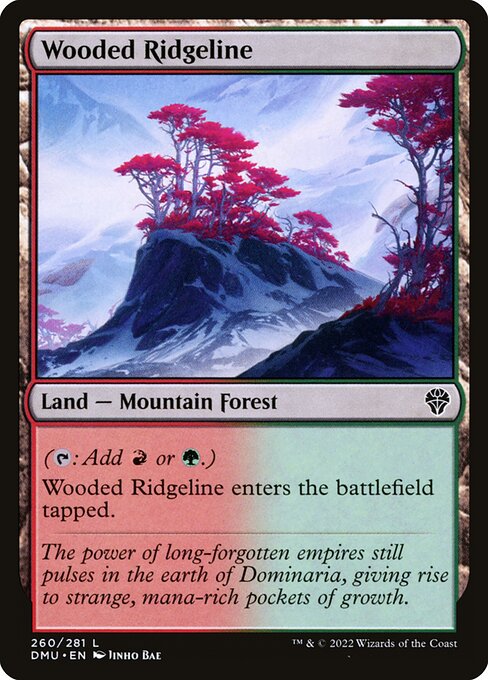
x1

x1

x4
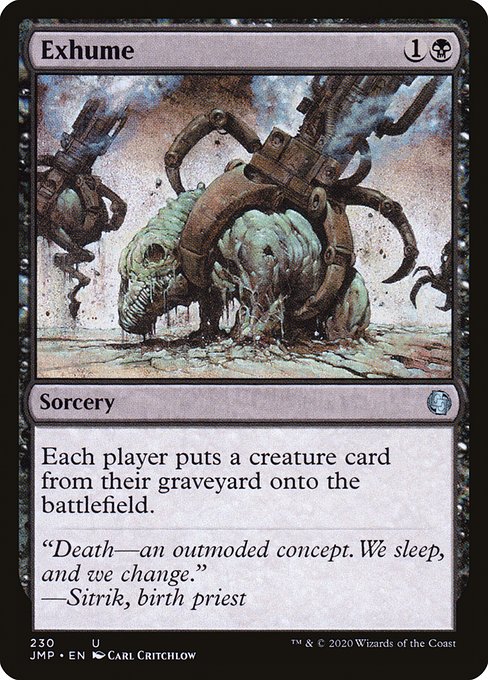
x4
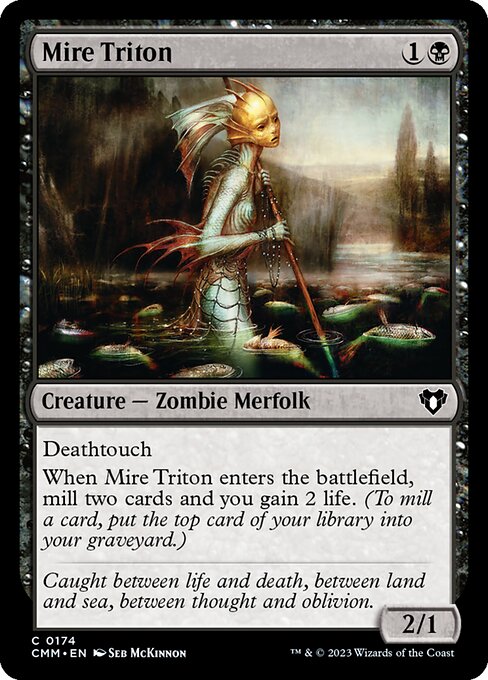
x4

x4

x4

x4
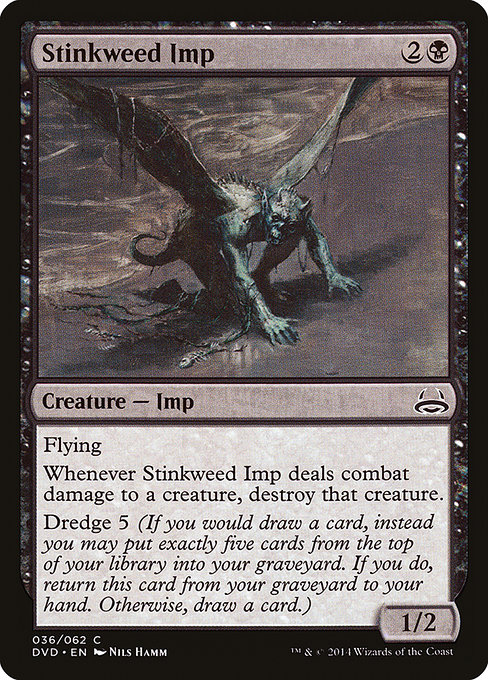
x4
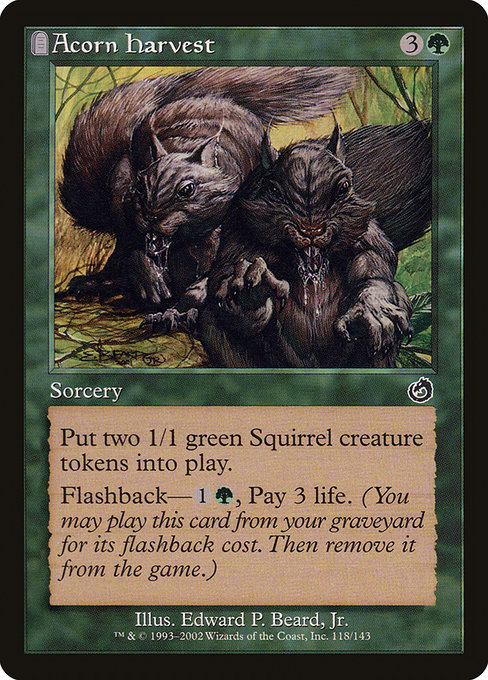
x4
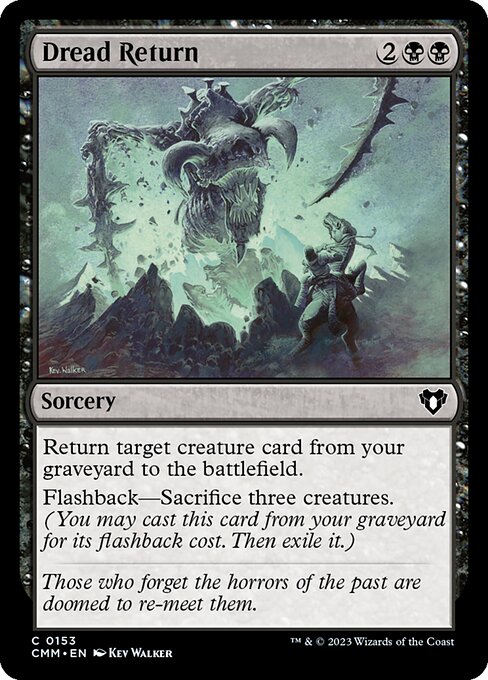
x4

x4

x4
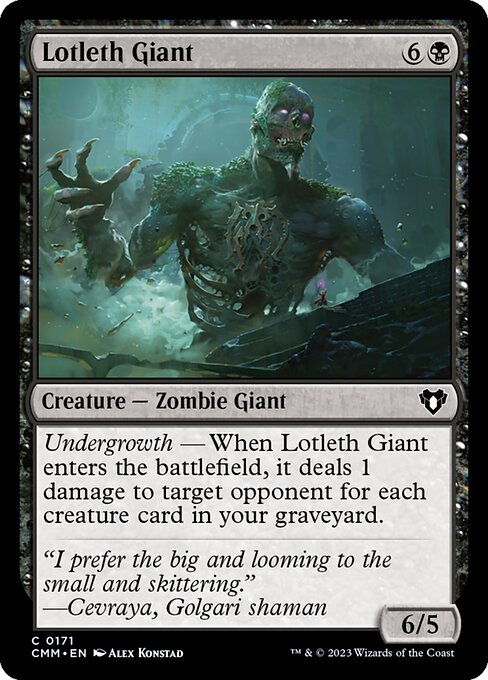
x4
Sideboard 
x1
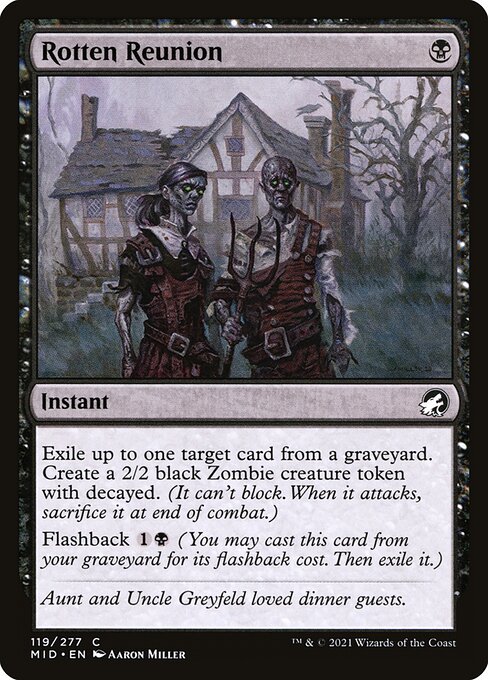
x3

x4
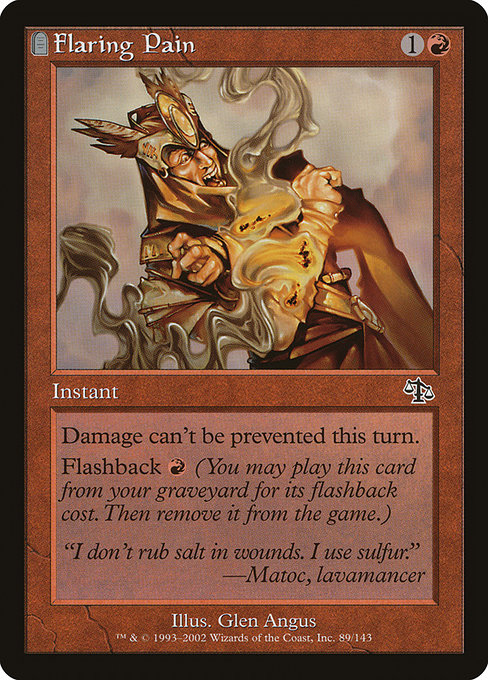
x2
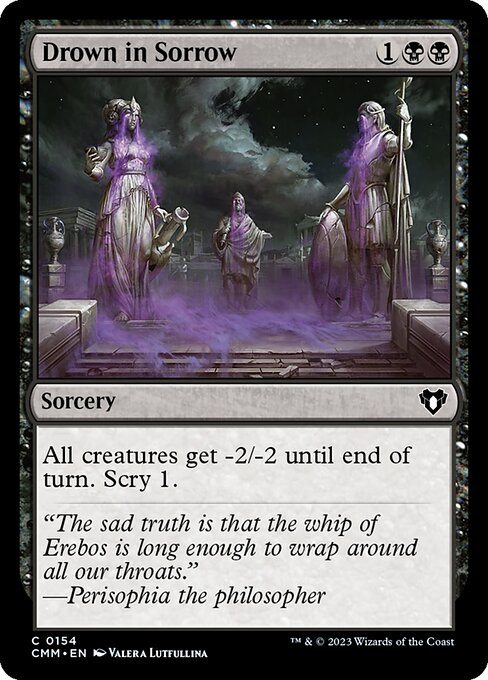
x4

x1
How to Play itJund Dredge, as its namesake keyword says, is a deck around the Dredge mechanic, which lets you mill cards from the top of your library in exchange for putting the card with it on your hand. The idea behind this is to mill as many creatures as possible to finish things off by reanimating a [card]Lotleth Giant[/card], which damages an opponent based on the number of creatures in your graveyard. In layman's words, that's the idea, but as you can imagine, this deck has to run large quantities of creatures to excel at its intended purpose, and because of this, we will go through each of them to see their role in the graveyard. The Creatures[cards]{{Satyr Wayfinder}}{{Blanchwood Prowler}}[/cards]First on the list, we have [card]Satyr Wayfinder[/card] and [card]Blanchwood Prowler[/card]. Both of them let you put cards into your graveyard when they enter the battlefield, and the upside is that you can put a land into your hand among the cards revealed. [cards]{{Mire Triton}}[/cards]We also got a similar effect on [card]Mire Triton[/card], a recently downshifted creature with deathtouch, relevant on holding the ground against the likes of [card]Tolarian Terror[/card], gaining life, and also milling some cards incidentally. If that was not good enough, it does also an excellent job at dodging [card]Snuff Out[/card]. [cards]{{Generous Ent}}{{Troll of Khazad-dum}}[/cards]Next up, we got some very important creatures in the form of [card]Generous Ent[/card] and [card]Troll of Khazad-dum[/card]. While har-casting them is not out of the question, at first glance, it may seem that all they can do is add an extra creature to the graveyard and search for the missing lands. Still, since they can search for any land that shares the type they are searching, they are critical in finding dual lands for the extra colors you may be missing. On top of that, these two are excellent targets for the multiple reanimation spells this deck runs, which can serve as a plan B if the main one of reanimating [card]Lotleth Giant[/card] fails. [cards]{{Lotleth Giant}}[/cards]Speaking of it, I knew this was the way to go with the card since it was released, and apparently, all it took for players to realize that this card has potential was the [card]Monastery Swiftspear Ban[/card]. I am really oblivious to why, though, mostly because Meta has not changed, but that's a discussion for later. What matters here is that the Giant is very good at winning games in the blink of an eye before some setup. [cards]{{Stinkweed Imp}}{{Scrapwork Mutt}}[/cards][card]Stinkweed Imp[/card] is our only Dredge creature from the deck, as it is the one that mills the most cards from all others, and while [card]Golgari Brownscale[/card] is another option, players seem to be fine with just one copy of this effect on the deck (more on that later). While ideally, you want this creature to be in your graveyard more often than not, there's some inevitability in drawing it. Because of this, there's a cute interaction with [card]Scrapwork Mutt[/card] as you can discard the Imp from your hand and put it into your hand again by milling six cards, thanks to how the dog is worded. It is also one of the few reasons why this deck runs red lands, as its flash-black cost requires you to use red mana. As far as creatures, that is what we got, and the main plan is what I’ve already explained: use them to put cards on your graveyard so the Giant can win you the game on the spot. That said, how do we reanimate it? Other Key Cards[cards]{{Exhume}}[/cards]First up, we got [card]Exhume[/card]. For only two mana, you get to put your big creatures on the field as early as turn two, even if your turn one was cycling either one of the land fixers. While that alone should win you the game or at least extremely pressure your opponent very early in the game, the idea is to use it to reanimate our dear friend [card]Lotleth Giant[/card]. However, the main way we will do that is with [card]Dread Return[/card] (yes, another downshift). [cards]{{Dread Return}}[/cards]For four mana, [card]Dread Return[/card] can return any creature from the graveyard to the battlefield, and by playing its flashback cost, you can reutilize it again from the graveyard. This means that even if you mill it, you can still use the other creatures that already provided you with value to cast it essentially for free and, in some scenarios, cast it twice, depending on how many [card]Lotleth Giant[/card]s you have on the graveyard. [cards]{{Acorn Harvest}}[/cards]To exploit this further, the deck runs [card]Acorn Harvest[/card], another card with flashback, and is very good at creating bodies (two squirrel tokens for two mana) to sacrifice for your [card]Dread Return[/card] shenanigans. [cards]{{Gnaw to the Bone}}[/cards]Lastly, it is a good idea to have a cushion to survive while you are setting up, and in this deck case, [card]Gnaw to the Bone[/card] is very good at stabilizing your life total, and of course, it also has flashback. The Mana Base[cards]{{Wooded Ridgeline}}{{Geothermal Bog}}[/cards]Jund Dredge is, in reality, a Golgari deck that just splashes red very lightly in the form of Wooded Ridgeline and Geothermal Bog to use the flashback part of Scrapwork Mutt, or in case you have to bring in your Ancient Grudge or Flaring Pain from the sideboard. In theory, you run the risk of milling them, and this deck, in particular, does not run any way to bring lands back once they are in the graveyard, so it's worth tutoring for them, or at least just one of them, in early stages of the game with either one of the land-cycling creatures. Outside of that, there are not many other exciting things to talk about the mana base. While twelve lands seems a little bit too low, if you count the eight land cyclers and the eight creatures that can pseudo-tutor for a land, you have up to 28 potential lands in a given deck. Tips and TricksAny deck has its fair share of cute synergies that you won't likely catch the first time playing it unless you’ve spent some time playing it. This is why I put together some that are the most common ones but not very intuitive.
How to Mulligan with Jund DredgeCertain hands are straightforward to evaluate, such as those devoid of lands or containing only one land with no affordable spells to cast. Thus, I will prioritize discussing Mulligan rules to steer clear of such scenarios. Keeping this in perspective, presented below are hand examples and my reflections. This hand seems good, but it could be better. The problem is that you have four lands already, missing one black, but what saves it is Satyr Wayfinder. It's not my favorite one, but I like it on the play a bit more. This, in turn, is a hand I would mulligan without hesitation. It seems obvious, but while you have at least one way to loot one of your Giants, you still have two more dead cards on your hand, and on top of that, you are missing a second land drop. Unlike the previous hand, this one is great, as you have three solid two drops and a way to fetch your extra land. This hand is on the wrong end, as the Acorn Harvest is somewhat useless if you draw them. I would love to have a cycling creature to cheat it on turn two, but since that is not the case, I would mull it on the draw. This hand is very good, but far from optimal. Still, you got a solid Exhume plan early in the game and a few ways to get your second and third land. How to Sideboard with Jund DredgeThe usage of the sideboard typically hinges on the makeup of your meta and your personal preference regarding specific cards. Below, I'll share my approach and what has proven effective in my experience running the deck. Ancient Grudge[cards]{{Ancient Grudge}}[/cards]This is a somewhat obvious addition against Affinity decks. However, you have to consider that most of the popular graveyard hate comes in the form of artifacts, such as Nihil Spellbomb, Relic of Progenitus, and Tormod’s Crypt. Therefore, it's worth siding in some copies against decks that use those by removing cards that are not as useful in the match. One thing I like to do against certain decks that I know do run those cards is to side out all copies of Exhume to prevent having more dead cards in my hand. Drown in Sorrow[cards]{{Drown in Sorrow}}[/cards]Popular decks like Mono-White Aggro have this nasty tendency of wanting to kill you with little dorks, and to prevent that, it is necessary to slow them down with board wipes such as [card]Drown in Sorrow[/card] while you are assembling your combo pieces by filling your graveyard. Flaring Pain[cards]{{Flaring Pain}}[/cards]This card's specific use is against Caw-Gates, as they have access to Prismatic Strands to prevent the damage from your Lotleth Giant. This is critical because Dread Return is a sorcery, and as such, you can’t respond to Prismatic Strands on the stack. This is why we need Flaring Pain to bypass that. One neat trick that people forget is that “protection from a color” means it prevents the damage. It's something to keep in mind if, for example, you are being walled by a Guardian of the Guildpact. If you cast this instant before damage, you will kill the protection creature if you are attacking with one with enough power that would normally not kill it. Oliphaunt[cards]{{Oliphaunt}}[/cards]This is a card that is not normally run in Jund Dredge lists. However, I like to include it alongside a Mountain to fetch it in case I want to cast my Red spells for their red costs. There’s a slight chance that you may end up milling both red sources the original list has. Therefore, adding a third one and a few ways to fetch it is a fine niche. Rotten Reunion[cards]{{Rotten Reunion}}[/cards]Rotten Reunion is a card that I like to foil opposing dredge plans and is your only reliable card to bring against Familiars. The bonus of running it is that you also get to put a body on the field that later can be used as fodder to cast your Dread Return from the graveyard. If you want a more in-depth sideboard guide, look at my free sideboard guides on Ko-Fi. How to Play vs. Jund DredgeWhile Jund Dredge may seem like an unbeatable force in Pauper at first glance, it is a skill-intensive deck because of the decisions you must make in different game phases. One key opportunity to capitalize on as an opponent is in the first few turns, as the deck itself does not have a turn-one play other than cycling a creature for a land. Additionally, all of their two drops, with the exception of Mire’s Triton, are weak and irrelevant to some extent. Another weakness to exploit is that the deck's only flying creature is Stinkweed Imp. Thus, in the first few turns, especially if you are playing a deck with cheap flyers like faeries, your opponents will have a hard time keeping up with the tempo loss. That said, the big issue with Jund Dredge is graveyard hate, mostly known as Relic of Progenitus. While they have artifact hate to deal with the threat, well-versed players aim to wait until the right moment to nuke your graveyard. This can occur in a couple of different scenarios, but as a rule of thumb, if you see a couple of Lotleth Giants, you should get rid of them. Of course, other cards like Nihil Spellbomb, Tormod’s Crypt, and Bojuka Bog are also excellent ways to hate the deck, and a bit of a secret tech against this particular version of the deck is Faerie Macabre. It may not seem significant, but think about it: If they go for Exhume, you can, in response, discard your faerie and exile their creatures, and you get a 2/2 flying one in return. This is excellent if, for example, you are on the draw and they aim to go for the turn-two exhume with their cycling creature. While the main goal is to exile their Lotleth Giants when they target it with Dredge Return, what you have to take into account is that there is no way your opponent can interact with it, which makes it an excellent sideboard option that will catch more than one opponent by surprise. Last but not least, I personally find the Familiars matchup one of the hardest because it packs key elements that a deck like Dredge may have lots of difficulties beating, such as life gain, countermagic, and, more importantly, it's another pseudo-combo deck that can lock Dredge out of the game with a couple of Familiars in play. Since the Dredge deck does not run any form of interaction, it's hard to disrupt their pre-sideboard plans. Post-sideboard, they have a niche graveyard hate plan, but that's pretty much about it. Other Cards You Should TrySome cards could help in specific matchups more than others, and while the options of the “stock” version are robust, here are some other cards worth trying out. Circle of the Land Druid[cards]{{Circle of the Land Druid}}[/cards]Similar to the other two drops, [card]Circle of the Land Druid[/card] can also mill lands from your library, but unlike the others, it does not put them right away onto your hand. In turn, it does it when it dies, and while it may sound strictly worse at first, it synergizes well with Dread Return. This is helpful for when you have accidentally milled your other red sources. Coffin Purge[cards]{{Coffin Purge}}[/cards]This is the card the “stock” version runs. It is similar to Rotten Reunion, but its flashback costs one less mana and does not give you the extra body, so I like the latter more. Ray of Revelation[cards]{{Ray of Revelation}}[/cards]This is a card similar to Ancient Grudge, but for enchantments. In a different meta, this card may see more use, but as things are now, the enchantress is not a threat you see a lot these days. Golgari Brownscale[cards]{{Golgari Brownscale}}[/cards]I understand that you need Gnaw to the Bone to survive, but I trust that trimming one copy for a Golgari Brownscale won’t hurt and will serve better to start your Dredge plans earlier. Still, that's just speculation, but it is worth looking into. Shenanigans[cards]{{Shenanigans}}[/cards]An artifact hate card that can be used multiple times and that mills your library is reasonable to have. Still, I would run one copy alongside my other four copies of Artifact Hate. Writhing Necromass[cards]{{Writhing Necromass}}[/cards]In the first iterations of the deck, I like running copies of [card]Writhing Necromass[/card] to put pressure on my opponent's shoes, which can act as a pseudo-win condition. At worst, it will buy some time and hold the ground, but committing to the main plan is probably better. Rubblebelt Maverick[cards]{{Rubblebelt Maverick}}[/cards]I mentioned that this deck lacks one-drops, and it is probably the closest one to being playable. While milling two cards is “fine,” it is definitely not Stitcher's Supplier, a card I would love to see downshifted. Still, it's an option I see people use instead of Exhume. My Dredge VersionWhile in principle, it's the same list, there are some card choices I swapped, including the ones noted above . Wrap-UpJund Dredge is one of my favorite decks to play right now. Given how the meta is being developed, sideboards are not big enough to run hate against mono red, affinity, caw gates, and Jund Dredge at the same time, so graveyard hate, while needed, is not popularized much yet. Thanks for reading up until now, and I really hope this deck coverage was helpful for you. If you liked this content and want to see more, check out my other related blog posts, and follow me on YouTube and social media. Take care, and I will see you in my next article. Where to Play Pauper?I have compiled a list of places to play Pauper, mostly IRL. The address may vary, but it's a helpful place to start and check if some of them are near you. They may not play Pauper every day, so it's always a good idea to ask before traveling. My Latest Pauper Brews |
My Favorite Pauper Setup
Here are some of my favorite MTG products for Pauper—stuff I’ve tried, loved, and think you'll find super useful too.
The Amazon links use affiliate codes that help support future content if you grab something.


.jpg)

.jpg)
.png)
.webp)

.webp)
.jpg)
Comments
Post a Comment